200 years of history
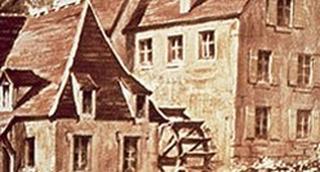
The Peugeot brothers Jean Pierre et Jean Frédéric converted the mill inherited from their miller ancestors, into a steel mill. Since then, rolled steel has been at the heart of Peugeot’s activities.

The R model, made in wood and sheet metal, is available in 10 different sizes. Up to 1870, it was called the “Ordinary Model”.

In 1850, the Lion symbol appears on all the saw blades. It symbolises the qualities of the Peugeot tools and utensils: Teeth resistance, blade flexibility, fast cutting.
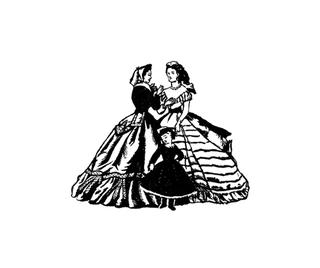
The crinoline arrived from England, Paris and the whole of France followed the movement. About 24,000 crinoline hoopskirts were produced each month, with weights varying from 150 to 300 g.
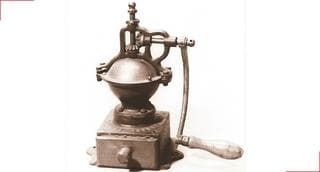
These mills, also called “counter or grocers mills” were used to grind large quantities of a variety of grains: coffee, sugar, oats, etc.
The trademark \”Lion on an arrow\” was officially registered on 20 November 1858 at the Conservatoire Impérial des Arts et Métiers.

The Z model was the very first model of the Peugeot table pepper mill, and also the most widespread, and still manufactured today. Initially, in plain white china, it was then made in silver-plated metal, in bakelite, in wood, it was sometimes fitted with a crank handle.
The feature of the Y model is that it was used head downwards, as its mechanism was hidden in the head. The crystal body was delicate; when it broke it was often replaced by a wooden body.
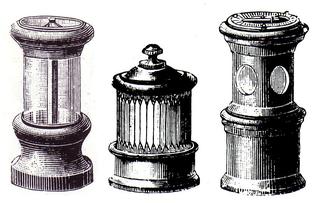
The A and C cylindrical pepper mills had a crystal body, with a wooden foot and cap.The X model had a glass body.
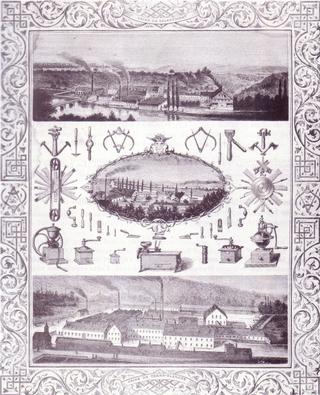
In the Beaulieu factory alone, this year saw the manufacture of 50,000 lawnmowers, 530,000 saws, 600 tonnes of rolled steel, 540,000 watch and clock springs, 600,000 plane irons, 24,000 kg of springs and corset boning, and 450,000 coffee grinders.
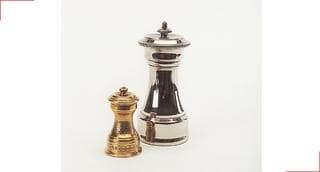
A pepper mill appeared, based on the Z model, measuring 50 mm high. It was called Bijou owing to its small size.

A wooden mill, with a blue design on a white background or a coloured pattern.
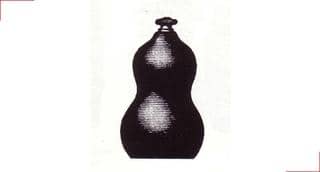
This model called COURGE, in polished walnut, is distinctive through its very rounded shapes.

The first wall-mounted mill was designed more than 200 different models of wall-mounted mills follows.
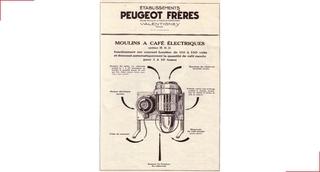
These initial models were cumbersome: the motor was outside the grinder and driven by a belt. They ceased to be manufactured in 1932.
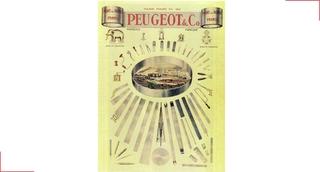
During the 1930s, Jean Pierre PEUGEOT visited major American car manufacturing plants. During a big banquet it was pointed out to him that everything in the room was American.”Almost all” replied the French boss picking up the table pepper mill “except this which is French” and turning it over, added “and what is more it’s PEUGEOT”.
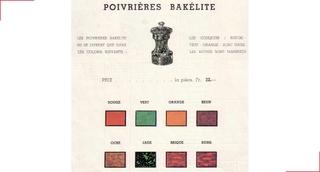
At this time, pepper mills were not identifiable by copper plates or others as were the coffee grinders. But this bakelite pepper mill carried the Lion on an arrow, moulded on its base.
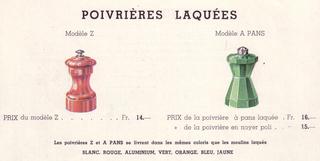
During the 1930s, pepper mills were decorated with coloured lacquer.
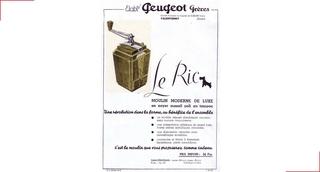
The “Ric” coffee grinder was invented. Its original shape, and its chromium metal parts made it a “modern luxury grinder”.
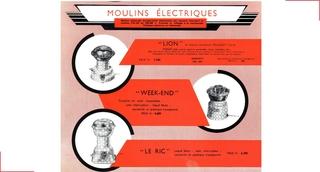
Practical, much lighter and less cumbersome than the electric grinders invented in the 1930s, these models signalled the end of the manual coffee grinders. Lion, Week-end, Rubis, Ric… in all, 17 models were designed in the 1950s or 1960s.
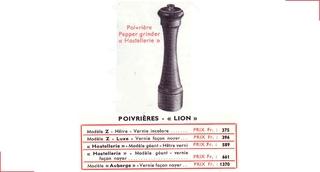
The Hostellerie pepper mill, characterised by its slender shape, in 2005 is still in the Peugeot catalogue.
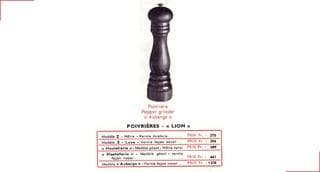
A real classic, made in beech; in 2005 it is still in the Peugeot collection.
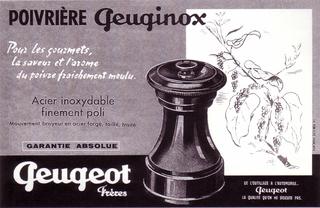
Peuginox pepper mill which, as its name indicates, is entirely in stainless steel.

With its simple and modern lines, in 2005 this wooden model is in the Peugeot collection. During the 1970s, it was produced in very colourful shades, with orange or green lacquer. Later, it was offered with a stainless steel head and a wooden body, under the name “Fidji”.
At that date 23 models of table pepper mills were counted, in about 70 different versions.

Paris, one of the most symbolic models in the present Peugeot collection, is offered in unpainted or lacquered wood. This collection is today offered a very wide range of colours and sizes: from 10 to 110 cm.
Creation Poivrières Salières Production and takeover of the production of Peugeot mills.
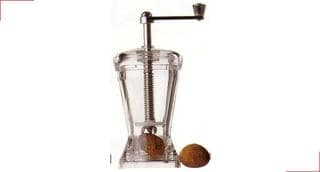
A new spice, nutmeg, fell into the Lion’s claws.
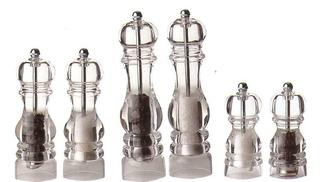
Nancy takes its inspiration from the shapes in the Paris range, in a transparent material.
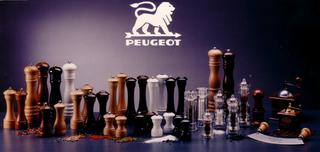
In 1996, the one-million mark was reached for mills and grinders sold world-wide that year.
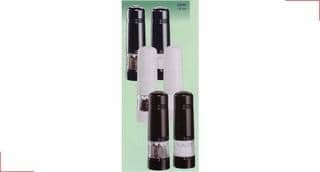
Initial production of the model LAVAL, the first electric pepper and salt mill. It was then offered with different finishings: black, white and blue.
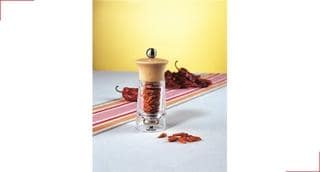
In its constant search for technological innovation, Peugeot has registered a large number of patents. In 2003, two new mechanisms were invented: pre-chopping for chilli and the mill for Guérande salt.

Invention of a system for selecting the grind fineness which allows exactly the desired fineness to be obtained. No less than six options are proposed for pepper and three for salt so that a dish and its seasoning are perfectly in tune with each other.

This model appears in dual form: a single rechargeable motor, and two mills. Only one hand is needed to change from pepper to salt.
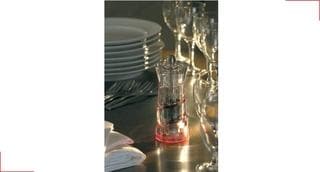
Renowned tableware designer Thomas Bastide created the Java mill. The Java mill had a cut groove design, which caused an ingenious optical illusion.
The brand took a decisive step in 2007 in deciding to expand its product line into wine tasting by buying the company L’esprit et le vin. With its lines Saveurs d’épices, Saveurs de vins and Saveurs de cafés, Peugeot established its presence in three areas – spices, wine and coffee – to become a leading player in kitchen and tableware.
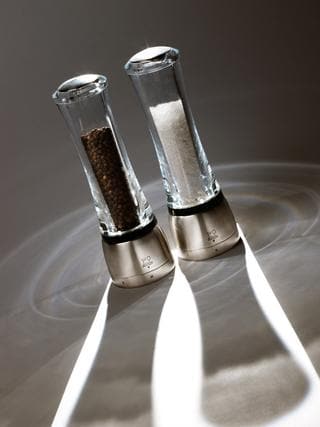
The central shaft that previously went right through the middle of the mill was removed. This innovation offers the aesthetic and functional advantages to a transparent mill and makes refilling easier.

Building on its expertise in wine, Peugeot created a line dedicated to learning about wine tasting. The “Coffret Dégustation” tasting kit gives wine lovers the opportunity to pierce the mysteries of wine.
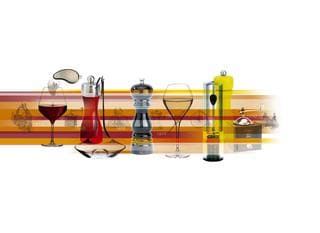
To celebrate its 200 years Peugeot revisited its “Classics” through the creation of the 1810 Limited Edition Collection: 4 iconic models (Bistro, Tahiti, Paris and Fiji). Each one is representative of an era and comes in one of 4 delicious and ultra-contemporary colours: Slate; Raspberry; Lime; and Fig. The anniversary was also the perfect opportunity to hold the competitions, ”Share your favourite mill story” and “Expose your mill”. Each offered lovers of the brand the opportunity to bring their fondest memories of the Peugeot mill to life through words or pictures.
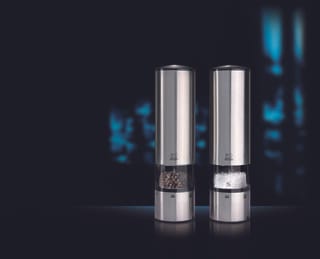
Triggered by a simple touch of the hand and lit by an LED, the Elis Sense electric mill combines technology and design.
Enables effortless nutmeg grinding.

The new “Saveurs fraîches” range presents Annecy, first Peugeot cheese mill.
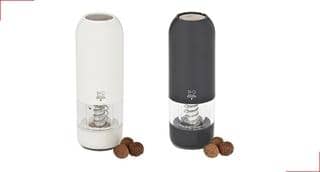
Designed specifically for wet salt, this mechanism features a patented system to achieve a consistent grind without any risk of a blockage, even with extremely wet or clumped salt. Its secret lies in the French-made and lifetime-guaranteed ceramic Peugeot mechanism featuring a screw which guide and mix air into the salt to ensure a consistent output.

Peugeot creates Isen, a mill that has been specially created to grind flax seeds and sesame. The patented innovative handle-driven mechanism in the centre of the mill can easily be removed for cleaning and has been specifically engineered to suit the consistency and hardness of flax seeds.
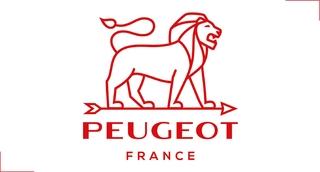
A new identity, a new signature, new uses, innovations and designs – the Peugeot lion is still hungry for new challenges and is now actively committed to exploring other areas where flavours reign supreme and creating new instruments of taste to help foodies satisfy all their prepping and cooking needs, whether cutting, slicing or grating…